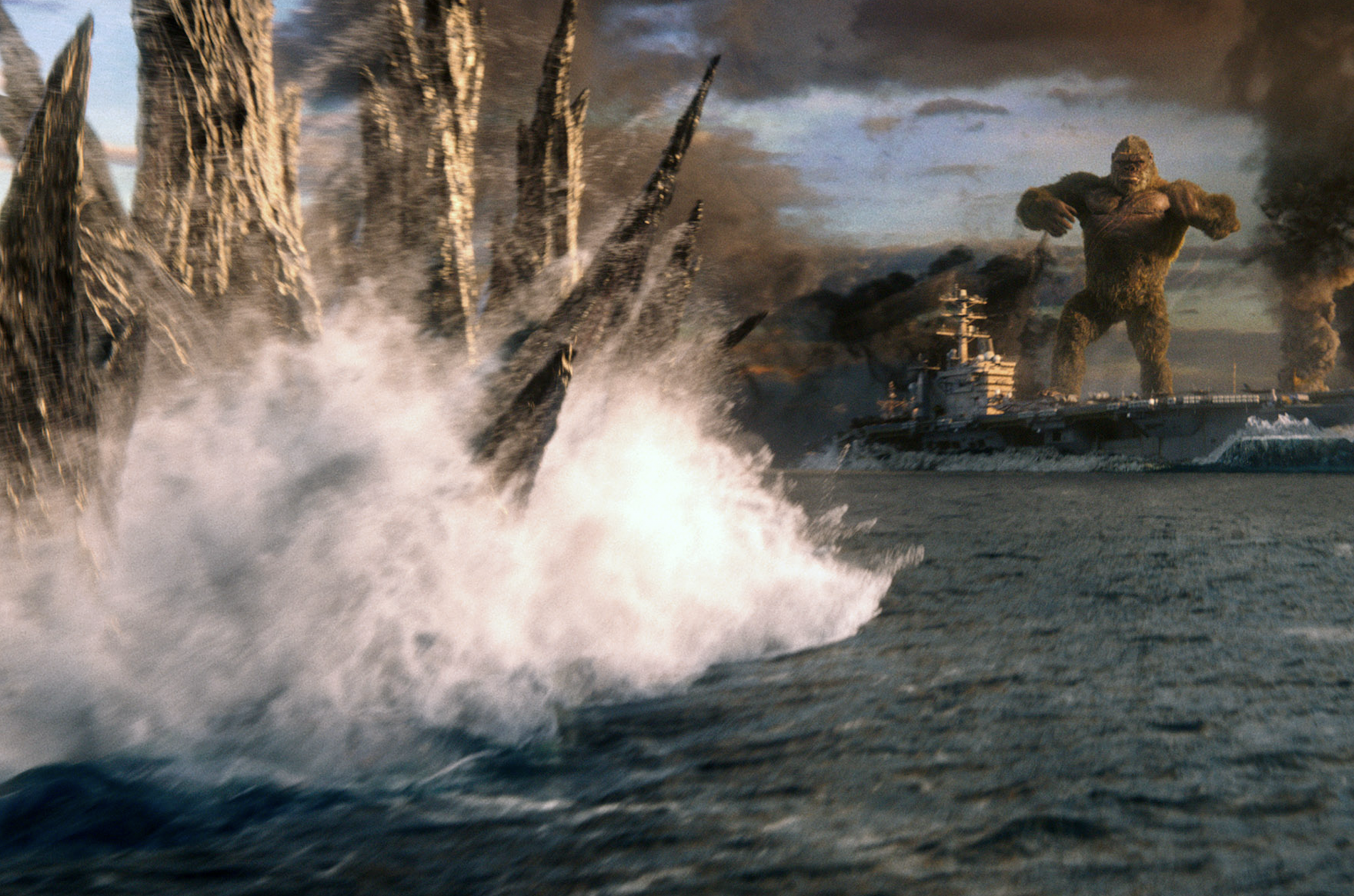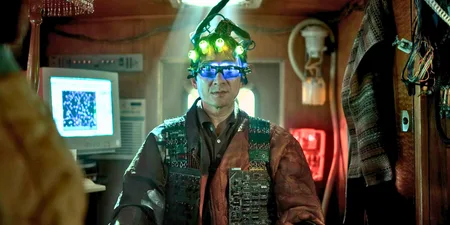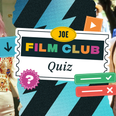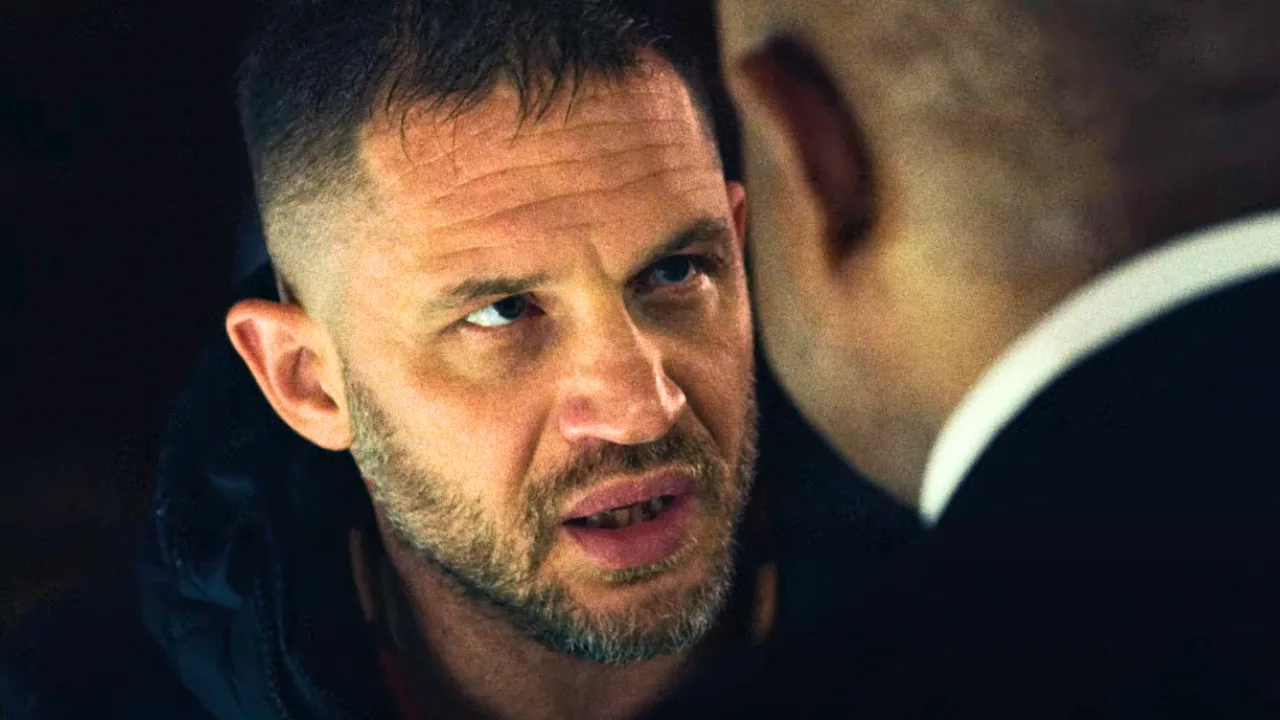In a giant hanger near Australia’s beautiful Gold Coast, there sits an enormous kaiju skull
The hand-sculpted polystyrene prop, which would barely fit into an Olympic-sized swimming pool, is the current centre of the movie set where Godzilla vs Kong is currently being shot.
Guarded by imposing militaristic figures, the skull is drenched in futuristic technology. Neon fibreoptic cables flutter and it glistens like a Christmas tree as Stranger Things’s Millie Bobby Brown and Julian Dennison, aka the kid from Hunt For The Wilderpeople, try to sneak into the control centre housed within.
This was all happening about two years ago. A lot has happened since March 2019. But we will get to that.
In 2014, Over 60 years after first stomping Tokyo, Godzilla was resurrected for American audiences by Legendary Pictures. That was then followed by the 2019 sequel King of the Monsters, which saw the US debuts of Godzilla’s giant monster buddies Mothra, Ghidorah and Rodan.
At the same time, America’s designated first monster King Kong also got reimagined for a new generation in 2017’s Kong: Skull Island. For better or worse, modern Hollywood blockbusters are all about shared universes, and early 2020 was set to see the culmination of Legendary’s long game with the duo squaring off in one big crossover movie.
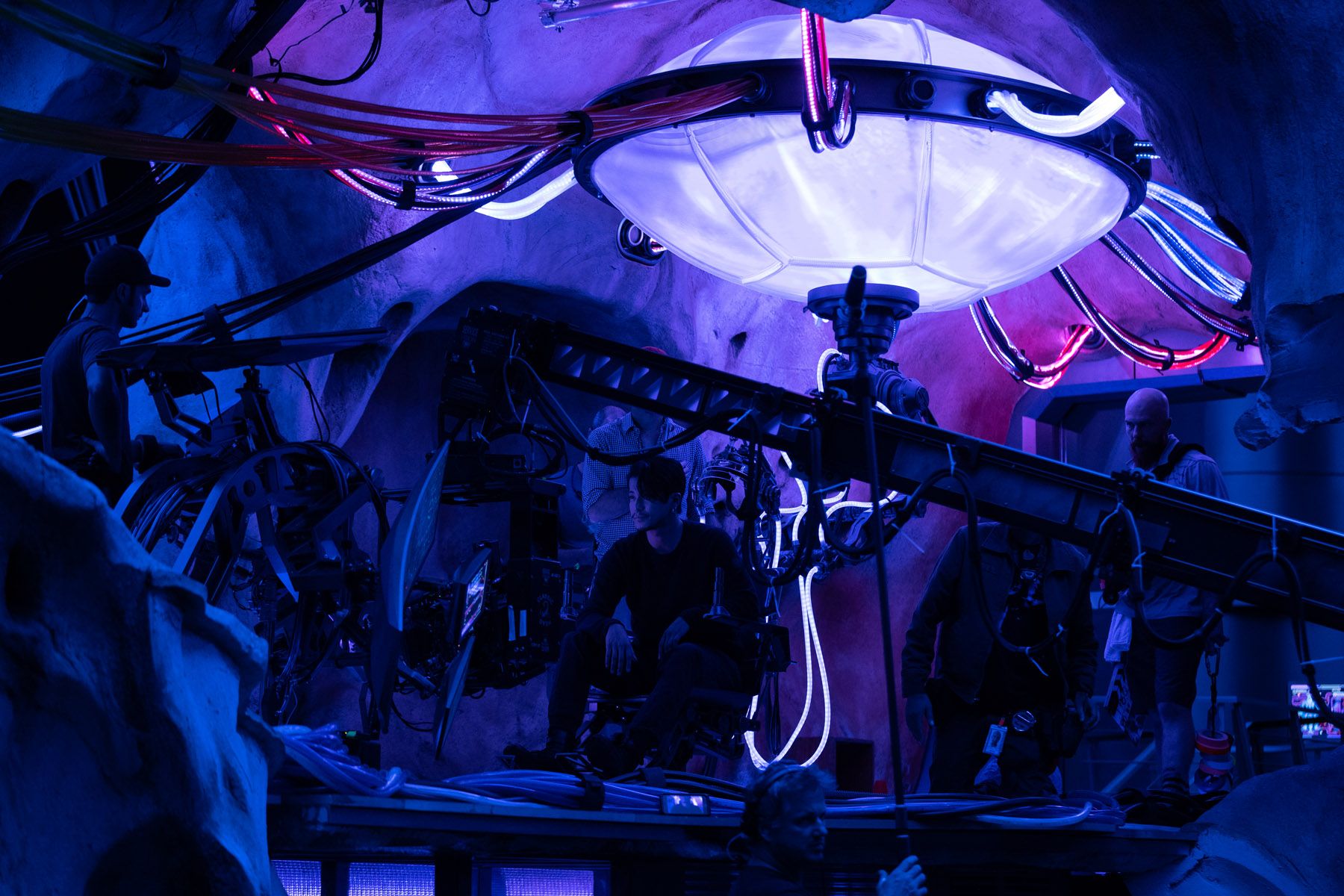
But this didn’t really all go to plan. King of the Monsters underperformed at the box office, and Godzilla vs Kong was pushed back to November 2020. And then there was that whole global pandemic thing, which meant cinemas around the world were shut. It got delayed again. But now, finally, Godzilla vs Kong is being unleashed into a very different world where it will premiere simultaneously both on streaming and in cinemas in the US (a UK release is coming soon).
But let’s got back to 2019. Prior to Millie Bobby Brown’s sneaking in, Japanese actor Shun Ogiri is standing ominously in the control room. A big name in his native country, he has been drafted on to add some authenticity from Godzilla’s homeland. He drops a possible nefarious one-liner and gives a sinister smile.
Director Adam Wingard yells cut. The camera pulls back to its original position and begins rolling again. Ogiri goes through the same motions, and repeats his line, with ever so slight variations on timing and emphasis. The process then happens again, and again and again. Movie making on this scale is long and laborious.
Between takes, endless hairspray is applied to Ogiri to keep his J-Pop swoosh in place. To fill the dead time between takes, the make-up woman shows him photos of her pets on her phone. He is still learning English, but he shows genuine interest.
Any journalist visiting the set is made to sign iron-cast embargoes forbidding them from revealing any plot details or production nuggets until a pre-agreed date – but I think it is safe to confirm that the make-up lady does indeed have two German shepherds and four cats.
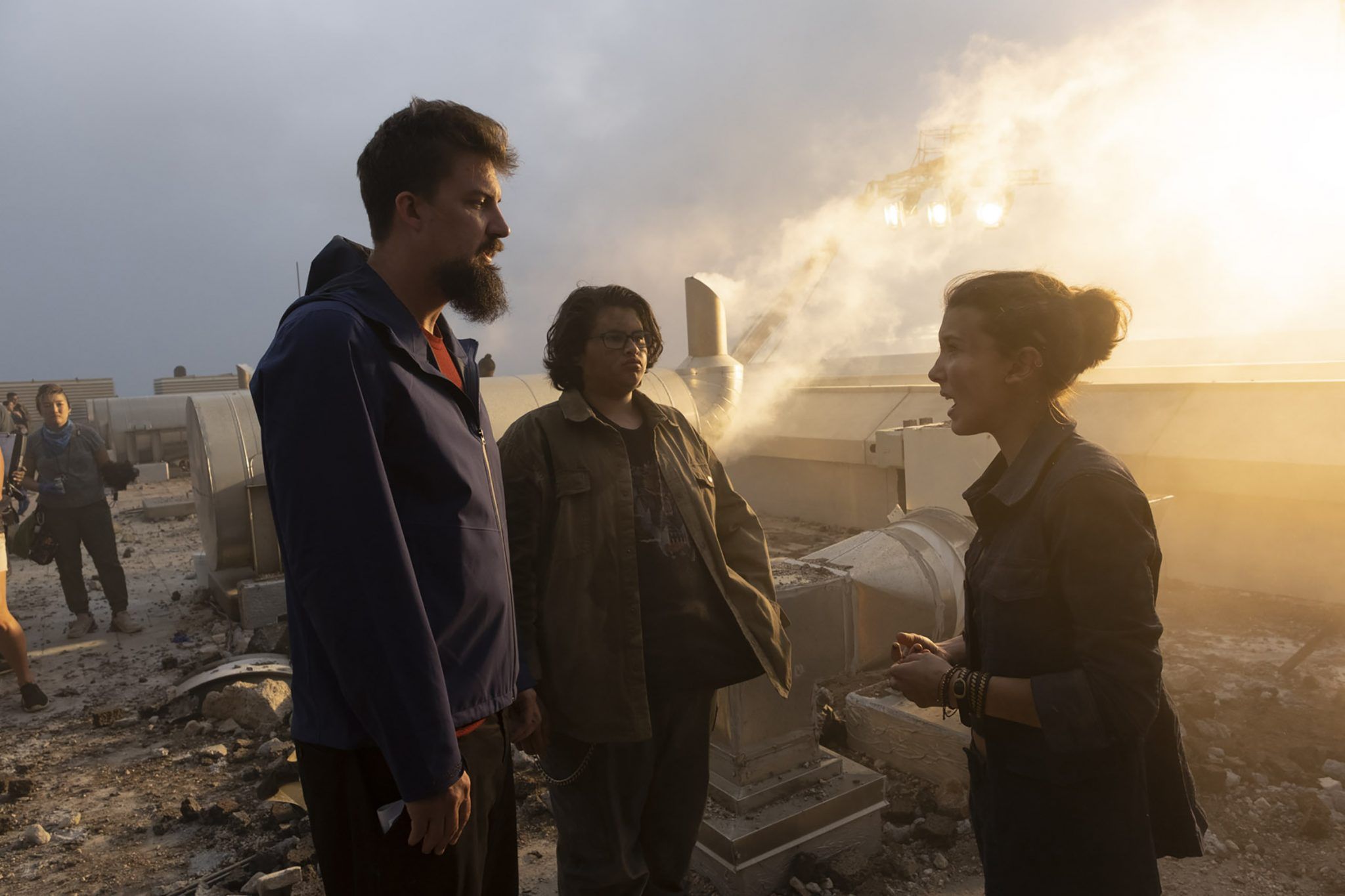
The majority of Godzilla vs Kong’s principal photography is being shot at the Village Roadshow Studios, in south east Australia. Located about an hour from Brisbane and next to the Gold Coast, it represents massive investment from Warner Brothers in the area. It is home to eight gigantic warehouse-like sound stages, along with dedicated office space for costume, production and other essential departments.
2018’s Aquaman was shot here, and massive posters for various Warner Bros films adorn the outside walls of the sound stages – a faded, forlorn Ryan Reynolds in Green Lantern peers at you over the rooftops as you arrive at the complex.
It is not the only big WB development here – right next door is Warner Brothers Movie World, a mid-sized theme park home to rides based on the studio’s various intellectual properties, including Scooby-Doo and the Justice League. During pauses in production meetings, the familiar screams of punters going through the loop-the-loops can be heard in the background.
Godzilla and King Kong have traditionally been depicted by stunt men in monster costumes and stop-motion animation respectively. Of course, things have changed since then. In Godzilla vs Kong, the producers say that the title creatures are “100% CG”. This means that the giant skull is the one tangible depiction of the monsters in the movie.
It is a phenomenal sight. Sculpted and painted by a team of artists, it has been lovingly rendered in three dimensions. The mouth skull is full of intricately modelled kaiju teeth, realistically broken and worn from a lifetime of city-munching. Anyone walking within twenty feet of the skull is required to wear protective covering over their shoes – it sits on a pristine, jet black tile floor that absolutely cannot be ruined by the footprints of my Air Max.
Normally movie sets like this have massive green screen sheets hanging behind them, for backgrounds to be added in at a later date. Not here though. Long black curtains drape around the skull, protecting it from the outside, world. It is a testament to the film’s art direction that all this is created in-camera, as opposed to on a screen months later. It genuinely feels like walking into an IRL super villain’s lair.
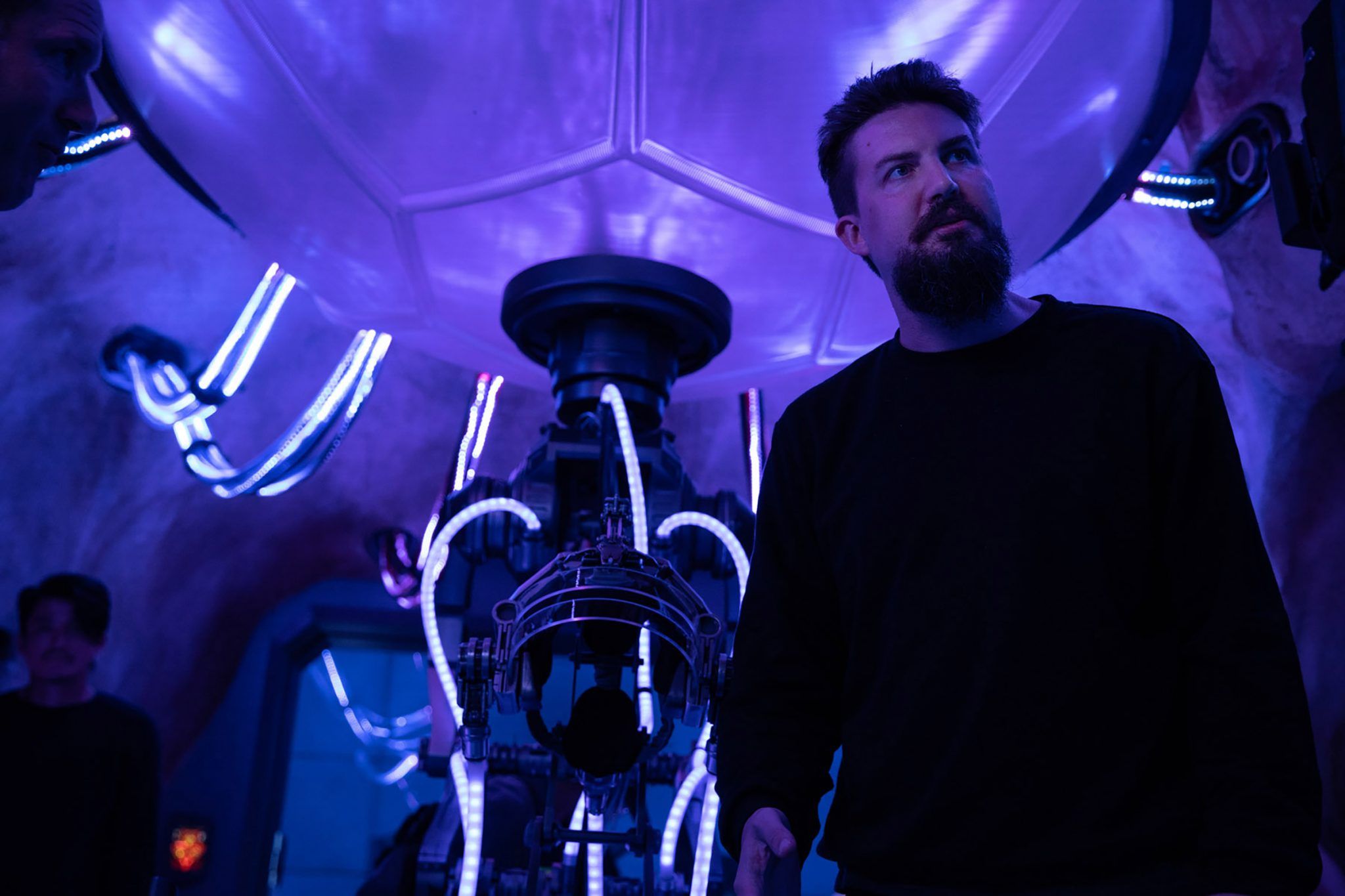
The filmmakers appear to be really trying to add some style to the movie, instead of just the usual turgid CGI gloop of modern blockbusters. All the concept art we see is drenched in neon colours, and Adam Wingard says the film’s big Hong Kong-set action scene was inspired by images of cities with “really cool turquoise and pink” filters he found on Tumblr.
“Because we’ve had the time to figure out how to do it, we’ve really been able to capture the concept art and bring it to life,” says Godzilla vs Kong producer Alex Garcia. “[The skull] did not require CG, which it would typically do,” he tells the assembled journalists from around the world while sitting at the head of the table in film’s production office.
They call it the ‘war room’. As well as the eight massive sound stages, Village Roadshow Studios are also home to all the offices and additional facilities needed to make a multi-million dollar movie – costumes, catering, art department etc.
It kind of feels like a school classroom. The walls are plastered with wild concept art. Dayglo landscapes of Hong Kong cover one side of the room, mock-ups of futuristic vehicles take up the other. Several impressive paintings of Godzilla and Kong brawling on an aircraft carrier stand out. One particularly memorable image shows Kong being transported while chained to a tanker in a vaguely S&M fashion.
Garcia enthusiastically explains the complicated plot of Godzilla Vs Kong. The movie has two main strands – on one side Millie Bobbie Brown, Julian Denison and Atlanta’s Brian Tyree Henry (dubbed ‘Team Godzilla’) investigate a conspiracy that is causing the big G to go on a rampage; on the other, Team Kong (consisting of Alexander Skarsgård and Rebecca Hall) enter the Earth’s core to seek out Kong’s origins.
2014’s Godzilla and 2017’s Kong: Skull Island were both enjoyable stand-alone movies, but this is the attempt to mix them all together into a Marvel-like mythology.
“Our mythology team at Legendary [and] Senior VP Barnaby Legg really spearheaded it, [and] we all work together about the possibilities,” Garcia continues. Wait, there is an actual Godzilla ‘Mythology Team’? Is there a whole team back in LA whose actual job is to come up with Godzilla lore? That is literally the best job ever.
Adam Wingard is an interesting choice to be directing a movie of this overwhelming size. He does not have a track record in blockbuster filmmaking. Instead, he’s made his name as a cult low-budget horror auteur. His first breakthrough movie, 2007’s psychedelic acid-themed chiller Pop Skull, was made for literally just a few thousand dollars.
He was tangentially part of the oft-derided lo-fi ‘mumblecore’ movement of the 2000s, that saw a generation of twentysomethings use consumer-grade digital cameras to make neurotic relationship dramas – but Wingard stood out by giving his work a horror twist.
He then made clever, pulpy movies like home invasion flick You’re Next and subversive Universal Soldier riff The Guest, but his biggest brush with the mainstream was Netflix’s poorly received manga adaptation Death Note. The budget of Godzilla vs Kong probably dwarfs the combined total of all his other movies combined.
Still only 36 at the time of shooting, Wingard is friendly and unassuming in the flesh. Tall, bearded and dressed all in black, he could easily be the bassist in post-hardcore band. He is obviously exhausted from the long shooting days, but still enthusiastically goes into detail about his favourite classic Godzilla films once you get him going.
“The first movie I ever did that got picked up cost $3,000,” he explains, back on set, when asked about the step up. “The interesting thing is once you are in the indie world for a while, you pick up all these habits where you have to constantly create something out of nothing. And when you are doing bigger and bigger movies, you actually have something. If anything I’ve been having to unlearn all those thing things that you had to create out of necessity.”
“But it is really cool to put my mark on something that could be a classic movie, these characters clashing for the first time since the 1960s.”
Wingard says that when he got the job on Godzilla vs Kong, he sat down and watched all 32 Japanese Godzilla movies in three days.
“So many of them I hadn’t seen since I was a kid, on TV when I was at home with my brothers, before I was even in kindergarten. So it was like traveling back in time. It was really exciting, remembering how I was feeling in those moments, how empathetic you are as a kid, watching those monsters.”
He points to the weird 1971 eco-themed Godzilla vs The Smog Monster as a favourite (“That’s a really fun, acid trip”), and gets emotional talking about 1995’s Godzilla vs Destroyah, aka the one where Godzilla dies. “I was in a weird Godzilla haze.”
“The most appealing thing to me is being able to empathise with these 300ft monsters, and have the characters do the same.”

Wingard is ushered back to his director’s chair, and shooting continues. We get to chat to the film’s young star Julian Dennison, who tells us how much he hates being tutored on set (“It’s horrible. It’s just like having school at home.”). He is very funny.
He is asked if, like Wingard, he can identify with Godzilla. “I don’t think anyone can relate to a giant lizard,” he replies.
Shooting on Godzilla vs Kong continues. You don’t quite realise how tedious million-dollar movie-making can be until you see it up close. Shun Ogiri walks in and out of the control room. Every take needs endless resets. Make-up needs to be retouched, lighting needs to be sorted, the camera crane needs to go back to its original position.
Eventually, the press pack is lead off the set, and back to the hotel. Production will continue for several more weeks. The public won’t even get a glimpse at how Kong or Godzilla look in the film for another 22 months or so.
But the appeal of a massive ape and a massive lizard going at each other doesn’t really date. As Julian Dennison put it back in Australia: “Warring giant monsters kill innocent people. You can’t go wrong with a monster movie.”
Godzilla vs Kong is coming soon to the UK.

